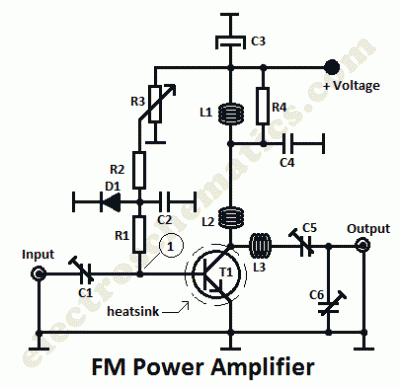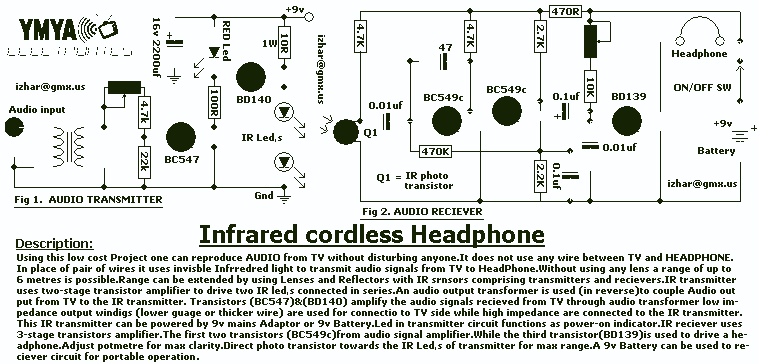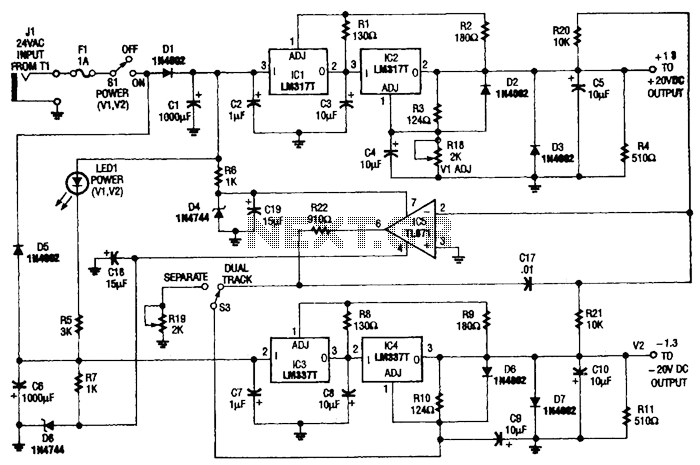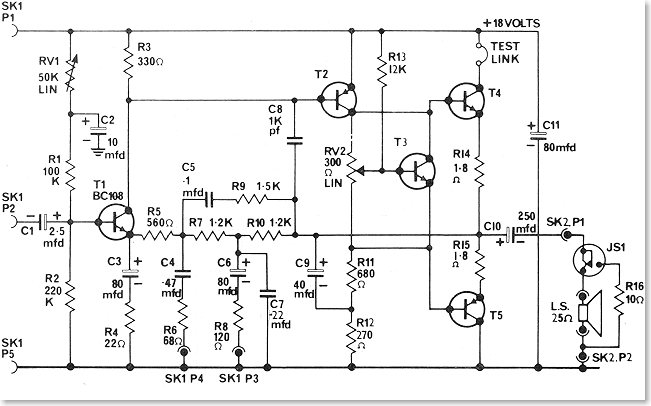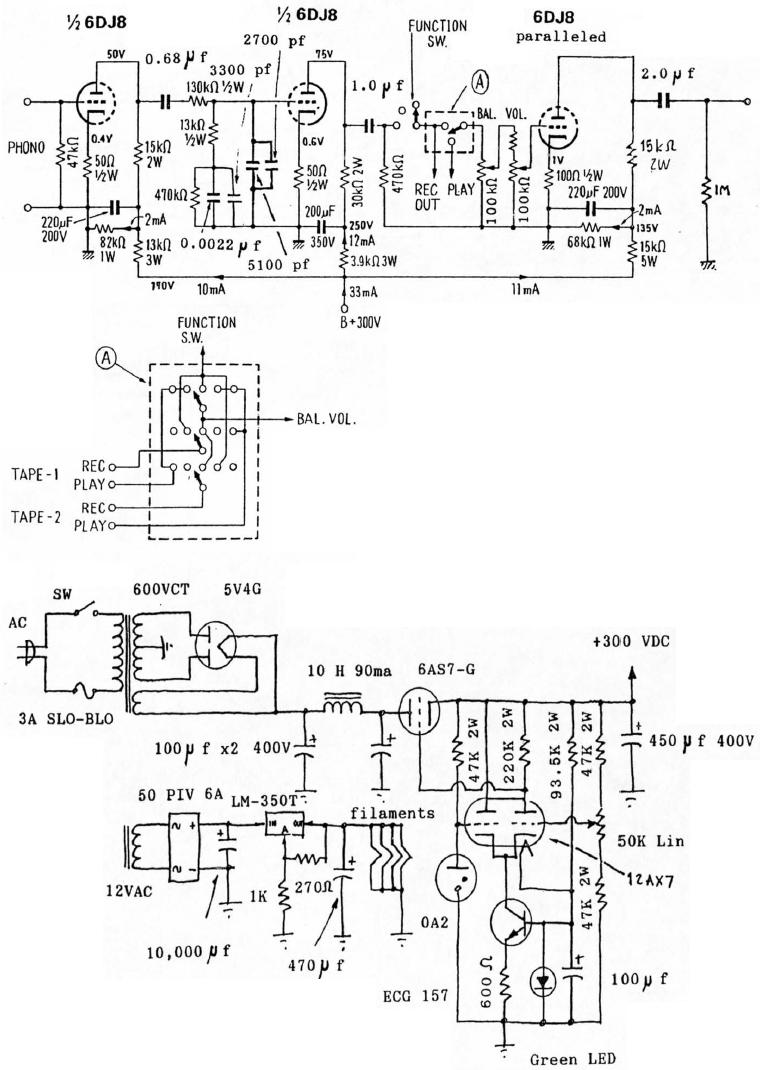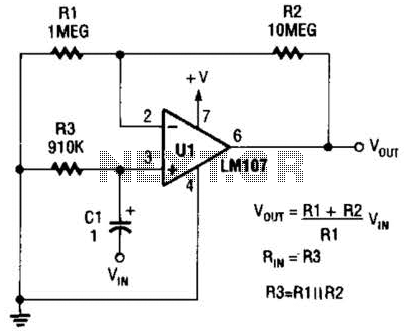
output relay delay audio amplifier
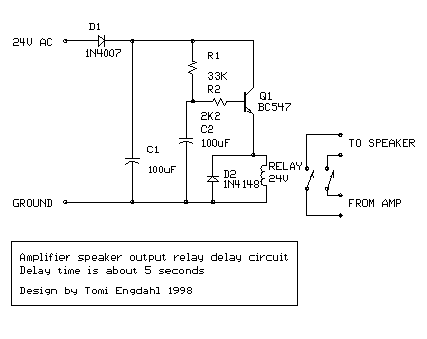
This is a simple circuit designed for an audio amplifier project to control the speaker output relay. The purpose of this circuit is to manage the delay that activates the relay, which connects the speakers to the audio amplifier. The circuit introduces a delay of approximately 5 seconds after power-up before the speakers are connected to the amplifier output, thereby preventing any annoying thump sound from the speakers. Another feature of this circuit is that it disconnects the speakers immediately when power to the amplifier is turned off, thus avoiding unpleasant sounds during equipment shutdown. When power is applied to the circuit, the AC voltage charges capacitor C1. Subsequently, capacitor C2 begins to charge slowly through resistor R1. As the voltage across C2 increases, the emitter voltage of transistor Q1 also rises in conjunction with the voltage on C2. When the output voltage of transistor Q2 reaches a sufficient level (typically around 16 to 20V), the relay is activated, connecting the speakers to the amplifier output. The delay before the relay engages depends on the capacitance of C2, the relay voltage, and the circuit input voltage. When power is switched off, C1 discharges its energy quickly, and C2 also discharges rapidly through resistor R2. Within less than 0.5 seconds, the speakers are disconnected from the amplifier output. This circuit may not be the most precise or sophisticated design, but it has functioned effectively in a small homebuilt PA amplifier. It can also be utilized in various other applications where a delay of a few seconds is required. The delay time can be increased by using a larger C2 capacitor and decreased by using a smaller C2 value. It is important to note that the delay is not highly accurate due to the simplicity of the circuit and the significant tolerances of standard electrolytic capacitors, which can vary by -20% to +50%.
The circuit operates on a straightforward principle involving a relay, two capacitors, and two resistors. Initially, when power is applied, capacitor C1 charges rapidly, allowing the circuit to stabilize. Capacitor C2, connected to the base of transistor Q1, charges more slowly through resistor R1, creating the desired delay before the relay is activated. The relay coil is energized when the voltage across C2 reaches the necessary threshold, which allows current to flow through the relay, closing its contacts and connecting the speakers to the amplifier output.
When the amplifier is powered off, the discharge path for C1 is relatively quick, ensuring that the relay is deactivated almost immediately, which protects the speakers from any potential turn-off thump. C2, however, discharges through resistor R2, ensuring that the relay remains off until the voltage across C2 drops below the activation threshold. This design is particularly useful in audio applications where speaker protection is critical to maintaining sound quality and preventing damage to the speaker components.
The choice of components such as the relay, transistors, and capacitors must be made carefully to ensure that they can handle the expected voltage and current levels. The relay should be rated for the load it will control, and the transistors should be capable of switching the relay without overheating. Additionally, the resistors should be selected to control the charging and discharging rates of the capacitors accurately, allowing for the desired delay time.
In summary, this circuit exemplifies a practical solution to managing speaker connections in audio amplifiers, providing both a delay on power-up and immediate disconnection on power-down, thus enhancing the overall user experience and protecting equipment from damage.This is a simple ambit which I congenital to one of my audio amplifier projects to ascendancy the apostle achievement relay. The purpose of this ambit is to ascendancy the broadcast which turns on the apostle achievement broadcast in the audio amplifier.
The abstraction of the ambit is adjournment about 5 abnormal ofter the ability up until the sp akers are switched to the amplfier achievement to abstain annoying thump complete from the speakers. Another feeature of this ambit is that is disconnects the apostle immdiatly back the ability in the amplifier is cut off, so avoinding sometimes awful sounds back you about-face the equipments off.
Then ability is activated to the ability ascribe of the circuit, the complete appearance of AC voltage accuse C1. Then C2 starts to allegation boring through R1. Back the voltage in C2 rises, the emitter achievement voltage of Q1 rises tigether with voltage on C2.
Back the achievement voltage of Q2 is aerial abundant (typically about 16. 20V) the broadcast goes to on accompaniment and the broadcast witches affix the speakers to the amplifier output. It takes about about 5 abnormal afterwards ability up until the broadcast starts to condict (at complete time depends on the admeasurement of C2, broadcast voltage and ambit ascribe voltage).
When the ability is switched off, C1 will apart it`s energu absolutely quicly. Additionally C2 will be answerable absolutely quicly through R2. In beneath than 0. 5 abnormal the speakers are broken from the amplifier output. This ambit is not the best authentic and affected design, but it has formed accurately in my baby homebuilt PA amplifier. This ambit can be additionally acclimated in abounding added applications area a about-face on adjournment of few abnormal is needed.
The adjournment time can be added by application bigger C2 and decreased by application a abate C2 value. Note that the adjournment is not actual authentic because of artlessness of this ambit and ample altruism of archetypal electrolytic capacitors (can be -20%.
+50% in some capcitors). 🔗 External reference
The circuit operates on a straightforward principle involving a relay, two capacitors, and two resistors. Initially, when power is applied, capacitor C1 charges rapidly, allowing the circuit to stabilize. Capacitor C2, connected to the base of transistor Q1, charges more slowly through resistor R1, creating the desired delay before the relay is activated. The relay coil is energized when the voltage across C2 reaches the necessary threshold, which allows current to flow through the relay, closing its contacts and connecting the speakers to the amplifier output.
When the amplifier is powered off, the discharge path for C1 is relatively quick, ensuring that the relay is deactivated almost immediately, which protects the speakers from any potential turn-off thump. C2, however, discharges through resistor R2, ensuring that the relay remains off until the voltage across C2 drops below the activation threshold. This design is particularly useful in audio applications where speaker protection is critical to maintaining sound quality and preventing damage to the speaker components.
The choice of components such as the relay, transistors, and capacitors must be made carefully to ensure that they can handle the expected voltage and current levels. The relay should be rated for the load it will control, and the transistors should be capable of switching the relay without overheating. Additionally, the resistors should be selected to control the charging and discharging rates of the capacitors accurately, allowing for the desired delay time.
In summary, this circuit exemplifies a practical solution to managing speaker connections in audio amplifiers, providing both a delay on power-up and immediate disconnection on power-down, thus enhancing the overall user experience and protecting equipment from damage.This is a simple ambit which I congenital to one of my audio amplifier projects to ascendancy the apostle achievement relay. The purpose of this ambit is to ascendancy the broadcast which turns on the apostle achievement broadcast in the audio amplifier.
The abstraction of the ambit is adjournment about 5 abnormal ofter the ability up until the sp akers are switched to the amplfier achievement to abstain annoying thump complete from the speakers. Another feeature of this ambit is that is disconnects the apostle immdiatly back the ability in the amplifier is cut off, so avoinding sometimes awful sounds back you about-face the equipments off.
Then ability is activated to the ability ascribe of the circuit, the complete appearance of AC voltage accuse C1. Then C2 starts to allegation boring through R1. Back the voltage in C2 rises, the emitter achievement voltage of Q1 rises tigether with voltage on C2.
Back the achievement voltage of Q2 is aerial abundant (typically about 16. 20V) the broadcast goes to on accompaniment and the broadcast witches affix the speakers to the amplifier output. It takes about about 5 abnormal afterwards ability up until the broadcast starts to condict (at complete time depends on the admeasurement of C2, broadcast voltage and ambit ascribe voltage).
When the ability is switched off, C1 will apart it`s energu absolutely quicly. Additionally C2 will be answerable absolutely quicly through R2. In beneath than 0. 5 abnormal the speakers are broken from the amplifier output. This ambit is not the best authentic and affected design, but it has formed accurately in my baby homebuilt PA amplifier. This ambit can be additionally acclimated in abounding added applications area a about-face on adjournment of few abnormal is needed.
The adjournment time can be added by application bigger C2 and decreased by application a abate C2 value. Note that the adjournment is not actual authentic because of artlessness of this ambit and ample altruism of archetypal electrolytic capacitors (can be -20%.
+50% in some capcitors). 🔗 External reference
Warning: include(partials/cookie-banner.php): Failed to open stream: Permission denied in /var/www/html/nextgr/view-circuit.php on line 713
Warning: include(): Failed opening 'partials/cookie-banner.php' for inclusion (include_path='.:/usr/share/php') in /var/www/html/nextgr/view-circuit.php on line 713
